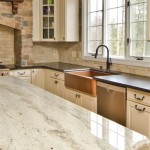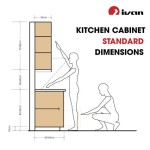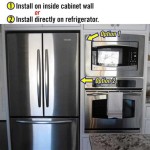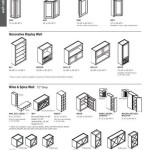Repairing MDF Kitchen Cabinet Doors: A Comprehensive Guide
Medium-Density Fiberboard (MDF) is a common material used in kitchen cabinet doors due to its smooth surface, affordability, and stability. However, MDF is susceptible to damage, particularly from moisture, impacts, and general wear and tear. Repairing MDF cabinet doors is a practical solution to extend the life of your kitchen and avoid the expense of complete replacement. This article outlines a step-by-step approach to effectively repair various types of damage commonly encountered in MDF kitchen cabinet doors.
Before commencing any repair, it is crucial to assess the extent of the damage. This will determine the necessary tools, materials, and repair techniques. Minor scratches and dents may only require filling and refinishing, while more significant damage, such as swelling or delamination, may necessitate more extensive repairs or even partial replacement of the affected section. Consider the finish of the cabinet door; painted finishes are generally easier to repair seamlessly compared to stained finishes, where matching the color and grain can be more challenging.
Safety is paramount throughout the repair process. Always wear appropriate personal protective equipment (PPE), including safety glasses, a dust mask, and gloves. Ensure the work area is well-ventilated, especially when using adhesives, fillers, or paints that release fumes. Use appropriate clamping techniques to secure the cabinet door during repairs. Unplug any power tools before changing bits or blades and familiarize yourself with the tool's operating manual.
Addressing Surface Scratches and Minor Dents
Surface scratches and minor dents are the most common types of damage found on MDF cabinet doors. These imperfections usually affect the finish layer and potentially the upper layer of the MDF itself. The repair process generally involves cleaning the area, filling the damage, sanding smooth, and refinishing to match the existing surface.
Start by thoroughly cleaning the damaged area with a mild detergent and water solution. Remove any dirt, grease, or loose particles that could interfere with the repair. Allow the area to dry completely before proceeding. For stubborn stains, a gentle solvent-based cleaner may be necessary, but always test it in an inconspicuous area first to ensure it doesn't damage the finish.
Once the area is clean and dry, apply a wood filler specifically designed for MDF. These fillers are typically available in paste or putty form and are formulated to bond well with the MDF material. Use a putty knife to apply the filler, pressing it firmly into the scratch or dent. Overfill the area slightly to allow for sanding. Remove any excess filler from the surrounding surface immediately.
Allow the filler to dry completely according to the manufacturer's instructions. Drying times can vary depending on the type of filler and the ambient humidity. Once dry, sand the filled area smooth using fine-grit sandpaper (220-grit or higher). Use a sanding block or orbital sander to ensure a smooth, even surface that is flush with the surrounding area. Take care not to sand through the existing finish during this step.
After sanding, remove any sanding dust with a tack cloth or microfiber cloth. Prime the repaired area with a primer specifically designed for MDF. This will create a uniform surface for the topcoat and help the paint or finish adhere properly. Allow the primer to dry completely according to the manufacturer's instructions. Lightly sand the primed surface with fine-grit sandpaper to remove any imperfections before applying the topcoat.
Finally, apply the topcoat to match the existing finish. For painted cabinets, use a high-quality latex or acrylic paint in the appropriate color and sheen. For stained cabinets, you will need to carefully match the stain color and apply a clear topcoat for protection. Apply the finish in thin, even coats, allowing each coat to dry completely before applying the next. Lightly sand between coats as needed to achieve a smooth, even finish. Consider using a professional color matching service for stain, which can be found through reputable paint stores. Consider applying multiple coats of clear topcoat for enhanced durability.
Repairing Swollen or Delaminated MDF
Moisture exposure can cause MDF to swell or delaminate, separating its layers. This type of damage requires a different approach than simple surface repairs. If the swelling is minor and localized, it may be possible to repair it. However, extensive delamination may necessitate replacing the affected section or the entire cabinet door.
Begin by addressing the source of the moisture. Identify and repair any leaks or sources of water that are contributing to the problem. Allow the MDF to dry completely before attempting any repairs. This may take several days or even weeks, depending on the severity of the swelling and the ambient humidity. Use a dehumidifier or fan to expedite the drying process.
Once the MDF is completely dry, assess the extent of the delamination. If the layers are only slightly separated, you may be able to re-bond them using wood glue. Inject wood glue into the delaminated areas using a syringe or applicator bottle. Clamp the affected area firmly together using clamps or weights. Protect the surrounding surface with wax paper or plastic to prevent the glue from sticking to the finish.
Allow the glue to dry completely according to the manufacturer's instructions. This may take 24 hours or more. Once the glue is dry, remove the clamps and clean up any excess glue with a damp cloth. If the delamination is more severe, you may need to use a wood filler to fill in the gaps between the layers. Apply the filler as described in the previous section, allowing it to dry completely and sanding it smooth.
If the MDF has swollen significantly, you may need to sand it down to restore a smooth surface. Use a coarse-grit sandpaper to remove the swollen material, followed by progressively finer grits to achieve a smooth finish. Be careful not to sand through the veneer layer, if one exists. Once the surface is smooth, prime and paint or finish as described in the previous section.
In cases of extreme swelling or delamination, where the MDF has lost its structural integrity, replacing the damaged section may be the only viable option. Carefully cut out the damaged section using a saw or router. Replace it with a new piece of MDF that is the same thickness and dimensions. Glue the new piece in place using wood glue and clamp it securely until the glue is dry. Sand the edges smooth and prime and paint or finish to match the surrounding area. It may be helpful to consult a cabinet maker or professional carpenter for this type of repair.
Repairing Damaged Edges and Corners
Edges and corners of MDF cabinet doors are particularly vulnerable to impact damage, resulting in chips, dents, or broken corners. Repairing this type of damage requires careful attention to detail to restore the original shape and profile of the door.
Clean the damaged area thoroughly, removing any loose particles or debris. If there are any loose or broken pieces of MDF, carefully remove them. If the damage involves a significant portion of the edge or corner, consider using a wood chisel or utility knife to carefully remove the damaged material, creating a clean, even surface for the repair.
For minor chips or dents, use a wood filler specifically designed for MDF. Apply the filler to the damaged area, overfilling slightly to allow for sanding. Use a putty knife to shape the filler to match the original profile of the edge or corner. You may need to use a template or guide to ensure the correct shape. Allow the filler to dry completely according to the manufacturer's instructions.
Once the filler is dry, sand it smooth using fine-grit sandpaper. Pay close attention to the shape and profile of the edge or corner, ensuring that it matches the surrounding area. Use a sanding block or profile sander to achieve a smooth, even finish. Remove any sanding dust with a tack cloth or microfiber cloth.
For more significant damage, you may need to use a wood shaping tool, such as a router or molding plane, to restore the original profile of the edge or corner. This requires a higher level of skill and experience, but it can produce a seamless repair. Once the shape is restored, sand the area smooth and prime and paint or finish as described in the previous sections.
An alternative approach for repairing damaged edges is to apply edge banding. Edge banding is a thin strip of material that is applied to the edge of the MDF to cover the damaged area and protect it from further damage. Edge banding is available in a variety of materials, including wood veneer, PVC, and melamine. Choose an edge banding that matches the color and finish of your cabinet doors. Apply the edge banding using an edge banding iron or adhesive. Trim the excess edge banding with a utility knife or edge banding trimmer. Sand the edges smooth and prime and paint or finish as needed. Ensure that the right type of adhesive is used for the edge banding material to ensure proper adhesion.
Repairing MDF kitchen cabinet doors is a cost-effective way to maintain the appearance and functionality of your kitchen. By following these steps and using the appropriate tools and materials, you can effectively repair a wide range of damage and extend the life of your cabinets. Always prioritize safety and take your time to achieve a professional-looking result.

How To Repair Mdf Water Damage Handhills Cabinets

How To Repair Kitchen Cabinets Mdf Water Damage

How To Repair Kitchen Cabinets Mdf Water Damage

How To Repair Ling Veneer On Particle Board Cabinets Handhills

How To Repair Mdf Water Damage Handhills Cabinets

Repairing Damaged Mdf Cabinet Doors

Water Damage On Press Wood Kitchen Cabinets Hometalk

Repairing Water Damage To Mdf Cabinets D Franco Finishes

Redo Cabinets Kitchen Repair Cabinet

Can You Paint Mdf Cabinets Pa Kitchen
Related Posts








